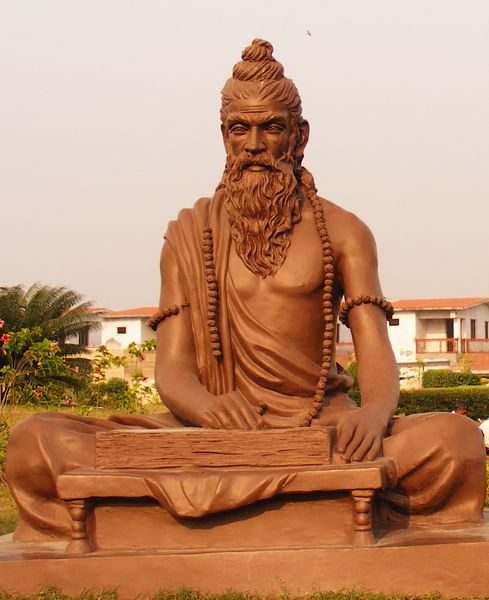Acharya Charaka and Sage Sushruta

- 25 May 2025
In News:
The Vice-President of India recently inaugurated the statues of Acharya Charaka and Sage Sushruta at Raj Bhavan, Goa, to honour India's ancient medical heritage rooted in Ayurveda and surgery.
Acharya Charaka – Father of Indian Medicine
- Period: Circa 100 BCE – 200 CE
- Region: Associated with Taxila, under the Kushan emperor Kanishka.
- Key Contribution:
- Originally based on the Agnivesha Samhita, later revised and compiled by Charaka.
- Focused on internal medicine (Kayachikitsa).
- Discussed physiology, disease pathology, diagnosis, and therapeutic techniques.
- Introduced the concept of three doshas: Vata, Pitta, Kapha—the basis for diagnosis and treatment in Ayurveda.
- Provided early insights into embryology (Garbha Vigyan) and preventive healthcare.
- Stressed medical ethics, such as confidentiality, non-maleficence, and the moral duties of a physician.
- Emphasized the importance of diet, lifestyle, and environmental factors in health.
- The Charaka Samhita is part of the B?hatTrayi (Great Trilogy) of Ayurveda and was expanded by D??habala.
- Translated into Arabic, Latin, and other languages, reflecting its global medical influence.
Sage Sushruta – Father of Surgery
- Period: Circa 600–700 BCE
- Region:Practised in Kashi (Varanasi), likely under King Divodasa.
- Key Contribution:
- A pioneering treatise in surgery and medical science.
- Detailed 300+ surgical procedures and over 100 surgical instruments.
- Innovations include rhinoplasty (nasal reconstruction), skin grafts, cataract surgery, and caesarean sections.
- Explained fractures, dislocations, use of anaesthesia, and surgical training.
- Emphasized dissection-based anatomy, practical education, and simulation for surgical learning.
- Covered areas like public health, toxicology, pediatrics (Kaumarbhritya), and neonatal care.
- Integrated scientific observation, hygiene, and evidence-based methods long before modern systems.
Collective Significance:
- Both are part of the B?hatTrayi (Charaka Samhita, Sushruta Samhita, and Ashtanga Hridaya), forming the backbone of Ayurvedic literature.
- Their work laid the foundation for:
- Holistic medicine and ethical healthcare practice.
- Advanced understanding of human physiology and embryology.
- Scientific surgery, centuries ahead of global developments.
- Contributions to child health (Kaumarbhritya) and public hygiene.
- Their texts influenced Arab and European medicine through translations such as Kitab-i-Susrud.
